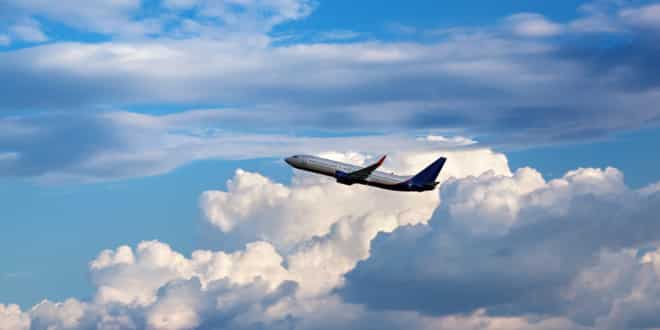When people talk about having a fear of flying, they are referencing a plane crash. The reality is that when it comes to accidents, airplanes represent one of — if not the — safest form of travel. Indeed, in the past nine years in the United States, one death has occurred due to an airline accident. When contrasted with the millions or people who’ve flown in that time period, the safety of airplane travel when it comes to accidents is underscored.
If people want to have a legitimate fear of flying, it should not center on accidents. Rather, the focus should be on what the human body is exposed to in an airplane cabin during a flight. In simple terms, an airplane cabin is not a health environment.
There are some specific tactics that you need to employ to stay as healthy as possible during an airplane flight. You are wise to pay close attention to this tips.
Air in an Aircraft Cabin
First of all, cabin pressure typically is akin to being 8,000 feet above sea level. Breathing along at this pressure is a challenge to the system in and of itself. There is also less available oxygen in the air in an airplane cabin. This, an additional burden is placed on a body as it tries to get an appropriate amount of oxygen into the blood.
Second, an airplane cabin can be and nearly always is a germ-infected tube. The air in the cabin is constantly recirculated during a flight. Thus, when people sneeze and cough on board an aircraft inflight (as they will do), germs can be spread throughout the cabin.
When in an airplane cabin, you need to make sure you have hand sanitizer, because the likelihood of any and all surfaces being somehow contaminated in some manner is significant. In addition, if you are ill, don’t fly. Show consideration for other passengers.
Hydrate Well
Before boarding an airplane, make sure you are well hydrated. Indeed, considering drinking more water than you normally do beginning a day before your flight.
The atmosphere of a plane can accelerate the dehydration process. This can lead to headaches and other issues (which will be discussed in a moment).
When on a plane, consider drinking water rather than a cocktail or caffeinated beverage of some sort. Taking this course works to ensure that you do remain better hydrated while inflight. This particularly is important if you are on a longer flight.
Stretch While Flying
There is something that has become dubbed as “economy-class syndrome.” This is a condition that occurs during longer flights, particularly among people who are no seated in a first class cabin, which is nearly everyone.
Being seated for extended periods of time, in cramped quarters, combined with low cabin pressure and dehydration, can lead to leg clots, according to the American Heart Association. These clots can have serious consequences, and even result in death in some cases.
One step to take (literally) to combat this type of health issue is to get up and stretch from time to time while flying. If possible get up and walk around at least a bit once every hour.
Watch What You Eat
Control what you eat while flying. In other words, don’t eat much and try to select healthier options while onboard a plane. Overeating or munching on unhealthy snakes will add a further burden to your already taxed system.
Of course, if you at a long flight, you do need to eat something. Consistent with TSA rules, you likely can purchase some healthy snacks at an airport vendor once you are through TSA screening. Some airlines have improved their own “snack menu” by offering some healthier options.
Hydrate Your Skin
In addition to hydrating by drinking plenty of water (which helps your skin), you should also use a skincare product that will hydrate exposed skin during a flight. The cabin atmosphere can do a number on your skin in a relatively short period of time.
Don’t apply anything but hand lotion while seated. Go to the restroom — which also provides you an opportunity to stretch. As an aside, consider using a fragrance free product out of consideration for your fellow passengers.
Plan Ahead
When it comes to airplane cabin self-care, be sure to plan ahead. You’ll be glad you did. This includes appropriately planning snacks and other items you may want to bring on the flight. We’ve already discussed beginning to up your water intake a day before takeoff.
Jessica Kane is a professional blogger who writes for Documents International LLC, a leading apostille service for individuals and businesses.
Liked this article? Share it to say “thanks!” Your support is much appreciated!







